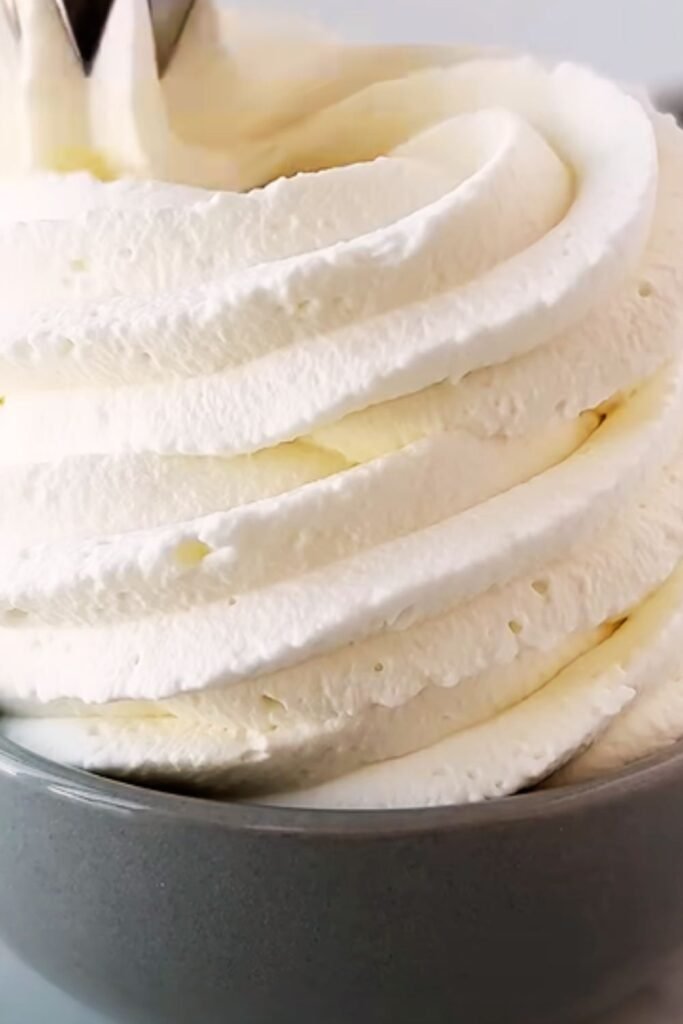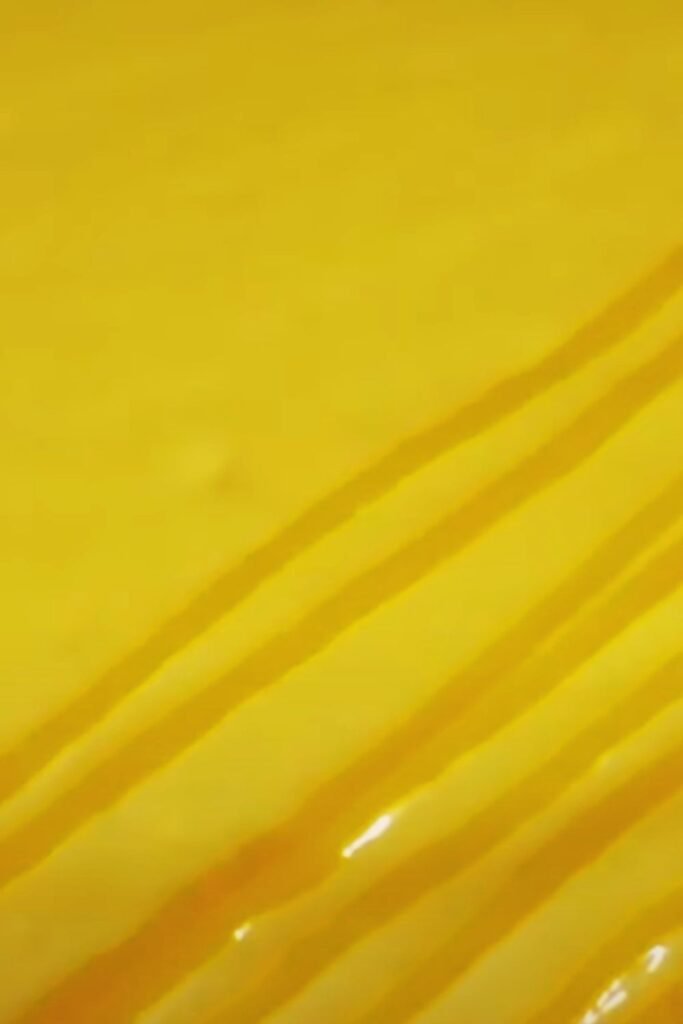There’s something truly magical about a perfectly executed Bavarian cream. The silky texture that’s somehow both rich and light at the same time, the delicate flavor that can be customized to your preference, and the elegant appearance that makes it a showstopper for any occasion. I’ve been perfecting my Bavarian cream technique for years, and today I’m going to share everything I know about this classic dessert.
Whether you’re a novice in the kitchen or an experienced baker looking to refine your technique, this comprehensive guide will take you through each step of creating the perfect Bavarian cream. We’ll explore its fascinating history, break down the science behind what makes it work, and I’ll share my time-tested recipe along with troubleshooting tips to ensure your success.
What Exactly Is Bavarian Cream?
Bavarian cream (or Crème Bavaroise in French) is a classic dessert consisting of a rich custard base that’s lightened with whipped cream and set with gelatin. Unlike regular custard, Bavarian cream holds its shape when unmolded and has a more aerated texture.
The dessert originated in France, not Bavaria as the name might suggest. It was named in honor of Bavaria by French chefs who worked for the Bavarian royalty in the late 18th century. Today, it’s enjoyed worldwide both as a standalone dessert and as a filling for cakes, tarts, and pastries.
What makes Bavarian cream special is its versatility. The base flavor is typically vanilla, but it can be adapted to include chocolate, fruit purées, coffee, or even liqueurs. The texture is a perfect balance between creamy and firm—substantial enough to hold its shape but delicate enough to melt in your mouth.
Essential Ingredients for Perfect Bavarian Cream
The beauty of Bavarian cream lies in its simple ingredient list. Here’s what you’ll need:
- Heavy Cream: Provides the rich, velvety texture. Use the highest quality you can find with at least 36% fat content.
- Egg Yolks: Acts as the thickening agent for the custard base. Farm-fresh eggs will give the best flavor and color.
- Milk: Whole milk works best for the perfect balance of richness and texture.
- Sugar: Regular granulated sugar works perfectly, though you can experiment with other sweeteners.
- Gelatin: The setting agent that gives Bavarian cream its structure. Sheet gelatin is traditional, but powdered works well too.
- Vanilla: For the classic flavor. Use real vanilla beans or pure extract for the best taste.
- Salt: Just a pinch enhances all the other flavors.
Understanding Gelatin Ratios
One of the trickiest aspects of making Bavarian cream is getting the gelatin amount just right. Too much, and your dessert will be rubbery; too little, and it won’t hold its shape. Here’s my guide to gelatin ratios:
| Desired Texture | Powdered Gelatin (per cup of liquid) | Sheet Gelatin (per cup of liquid) |
|---|---|---|
| Soft Set (for fillings) | 1 teaspoon (3g) | 1.5 sheets (3g) |
| Medium Set (classic) | 1.5 teaspoons (4.5g) | 2 sheets (4g) |
| Firm Set (for molded desserts) | 2 teaspoons (6g) | 3 sheets (6g) |
Remember that acidic ingredients like fruit purées may require slightly more gelatin to achieve the same set.
Classic Bavarian Cream Recipe
Now let’s dive into my tried-and-true recipe for classic vanilla Bavarian cream.
Ingredients:
- 2 cups (480ml) heavy cream, divided
- 1 cup (240ml) whole milk
- 6 large egg yolks
- 3/4 cup (150g) granulated sugar
- 1 vanilla bean, split and scraped (or 2 teaspoons pure vanilla extract)
- 2 1/4 teaspoons (7g) powdered gelatin
- 3 tablespoons cold water
- Pinch of salt
Equipment:
- Heavy-bottomed saucepan
- Heatproof bowl for ice bath
- Whisk
- Fine-mesh strainer
- Stand mixer or hand mixer
- Rubber spatula
- Decorative mold or serving glasses

Step-by-Step Instructions:
- Prepare the gelatin: Sprinkle the gelatin evenly over the cold water in a small bowl. Let it sit for 5-10 minutes to bloom (absorb the water and swell).
- Prepare an ice bath: Fill a large bowl with ice and water. Set aside a slightly smaller bowl that will fit inside the ice bath.
- Make the custard base: In a heavy-bottomed saucepan, combine the milk, half of the heavy cream (1 cup), vanilla seeds and bean pod (if using), and salt. Heat over medium-low heat until steaming but not boiling.
- Temper the egg yolks: In a separate bowl, whisk together the egg yolks and sugar until pale and slightly thickened. Gradually add about 1/2 cup of the hot cream mixture to the egg yolks, whisking constantly to prevent scrambling. Once tempered, slowly pour the egg mixture back into the saucepan, whisking continuously.
- Cook the custard: Return the saucepan to medium-low heat. Cook, stirring constantly with a wooden spoon or heat-resistant spatula, until the mixture thickens enough to coat the back of the spoon (175°F/80°C on an instant-read thermometer). Do not let it boil.
- Strain and add gelatin: Remove from heat and immediately strain through a fine-mesh sieve into the clean bowl prepared for the ice bath. Remove the vanilla bean pod if used. Add the bloomed gelatin to the hot custard and stir until completely dissolved.
- Cool the mixture: Place the bowl in the ice bath and stir occasionally until the mixture cools and begins to thicken slightly, about 20-30 minutes. It should be cool to the touch but not set.
- Whip the remaining cream: While the custard is cooling, whip the remaining 1 cup of heavy cream to medium-firm peaks.
- Fold in the whipped cream: Once the custard has cooled but before it sets, gently fold in the whipped cream in three additions using a rubber spatula. Be thorough but gentle to maintain as much air as possible in the mixture.
- Pour and chill: Pour the mixture into your chosen mold(s) or serving glasses. Cover with plastic wrap directly on the surface to prevent a skin from forming, and refrigerate for at least 4 hours, preferably overnight.
- Unmold and serve: If using a mold, briefly dip the mold in warm water for 5-10 seconds to loosen the edges. Place your serving plate on top and quickly invert. Gently shake or tap to release. If it doesn’t release easily, repeat the warm water dip.
Serving Suggestions:
Bavarian cream is a versatile dessert that can be presented in many ways:
- Served in elegant glasses or ramekins with fresh berries on top
- Unmolded from a decorative mold and garnished with fruit coulis
- Used as a filling between cake layers
- Piped into cream puffs or éclairs
- Served alongside buttery cookies for contrast in texture
For an extra touch of elegance, dust with a light coating of powdered sugar or garnish with edible flowers.

Flavor Variations
While vanilla Bavarian cream is classic, don’t be afraid to experiment with these delicious variations:
Chocolate Bavarian Cream
Add 6 ounces (170g) of melted and cooled bittersweet chocolate to the custard after straining. Increase sugar to 1 cup if you prefer it sweeter.
Fruit Bavarian Cream
Add 1 cup of fruit purée to the cooled custard before folding in the whipped cream. Reduce the milk by 1/4 cup and increase gelatin by 1/2 teaspoon to compensate for the added moisture. Popular options include:
- Strawberry
- Raspberry
- Mango
- Passionfruit
- Lemon (with additional zest)
Coffee Bavarian Cream
Add 2 tablespoons of instant espresso powder to the milk and cream mixture before heating.
Praline Bavarian Cream
Fold in 1/2 cup of crushed caramelized nuts to the finished cream just before pouring into molds.
Liqueur-Flavored
Add 2-3 tablespoons of your favorite liqueur to the cooled custard before folding in the whipped cream. Good options include Grand Marnier, Amaretto, or Frangelico.
The Science Behind Bavarian Cream
Understanding the science can help you troubleshoot and perfect your technique:
Custard Formation
The egg yolks contain proteins that uncoil and bond when heated, thickening the liquid. The key is heating them enough to thicken but not so much that they scramble. The perfect temperature is around 175°F (80°C).
Gelatin Structure
Gelatin molecules unwind when heated and then form a network when cooled, trapping liquid and creating a gel. It needs proper blooming (hydration) before being dissolved into hot liquid for the best texture.
Whipped Cream Stability
The fat in heavy cream allows it to hold air bubbles when whipped. These air bubbles create the light texture. Over-whipping will cause the fat molecules to clump together, resulting in butter rather than whipped cream.
Folding Technique
Proper folding preserves the air bubbles in the whipped cream. The goal is incorporation without deflation, which maintains the cream’s airy texture.
Troubleshooting Common Issues
Even experienced pastry chefs encounter challenges with Bavarian cream. Here are solutions to common problems:
Problem: Cream doesn’t set properly
Causes and Solutions:
- Gelatin wasn’t properly bloomed: Always give gelatin the full 5-10 minutes to absorb water
- Custard was too hot when gelatin was added: Let it cool slightly before adding
- Not enough gelatin: Increase amount by 1/2 teaspoon next time
- Enzymes in fresh pineapple, kiwi, papaya, or mango: These fruits contain enzymes that break down gelatin. Always use cooked fruit purées with these fruits.
Problem: Lumpy texture
Causes and Solutions:
- Egg yolks scrambled during cooking: Use lower heat and strain thoroughly
- Gelatin didn’t fully dissolve: Make sure to whisk well when adding gelatin
- Whipped cream was over-whipped: Stop whipping at medium-firm peaks
Problem: Cream is too firm or rubbery
Causes and Solutions:
- Too much gelatin: Reduce amount by 1/2 teaspoon next time
- Chilled for too long: Serve slightly before it’s completely set for a softer texture
Problem: Cream separated during setting
Causes and Solutions:
- Custard wasn’t cool enough before adding whipped cream: Be patient and wait until custard is completely cooled
- Components weren’t folded together thoroughly: Take time to fold gently but completely
Make-Ahead and Storage Tips
Bavarian cream is ideal for preparing in advance:
- Can be made up to 2 days ahead and kept refrigerated
- Cover tightly with plastic wrap directly on the surface to prevent skin formation
- Not suitable for freezing as the texture will be compromised upon thawing
- If using as cake filling, apply when the cream has started to set but is still spreadable

Historical Notes and Cultural Significance
Bavarian cream has a rich history dating back to the late 18th century. It was reportedly created by French chefs working for the Bavarian royal family, hence the name. It gained popularity throughout Europe during the 19th century and became a staple in classic French patisserie.
Marie-Antoine Carême, often called the “King of Chefs and Chef of Kings,” was one of the first to document recipes for Bavarian cream in the early 1800s. His version used isinglass (fish bladder gelatin) rather than the modern sheet or powdered gelatin we use today.
In France, Bavarian cream is known as “Crème Bavaroise” and is often served as “Charlotte Russe” when used to fill a dessert lined with ladyfingers. In America, a simplified version became popular in the mid-20th century, sometimes made with commercial pudding mixes and whipped topping.
Today, Bavarian cream continues to be a mark of skilled pastry chefs and is featured on dessert menus at fine dining establishments worldwide.
Health and Dietary Considerations
Traditional Bavarian cream contains dairy, eggs, and animal-derived gelatin, making it unsuitable for vegans and those with certain dietary restrictions. However, adaptations are possible:
Dairy-Free Version
Substitute coconut cream for heavy cream and full-fat coconut milk for whole milk. The flavor will have a slight coconut note, which pairs well with tropical fruit variations.
Vegan Version
Use the dairy substitutes mentioned above, plus:
- Replace egg yolks with 3 tablespoons of cornstarch mixed with plant-based milk
- Use agar-agar powder instead of gelatin (typically 1 teaspoon agar-agar powder replaces 1 tablespoon gelatin)
Lower Sugar Options
- Reduce sugar by up to 1/3 without significantly affecting texture
- Substitute part of the sugar with erythritol or monk fruit sweetener
- For diabetic-friendly versions, consider using allulose which doesn’t affect blood sugar levels
Gluten-Free Status
Traditional Bavarian cream is naturally gluten-free, but always check any additions like cookie crumbs or flavor extracts for hidden gluten.
Frequently Asked Questions
Here I’ll address some of the questions I often receive about making Bavarian cream:
Q: Can I make Bavarian cream without gelatin? A: Yes, you can substitute agar-agar powder, which is plant-based. Use about 1 teaspoon of agar-agar powder for every tablespoon of gelatin. Note that agar sets more firmly and at a higher temperature than gelatin.
Q: Why did my custard curdle? A: This happens when egg proteins are heated too quickly or to too high a temperature. Always cook custard over medium-low heat, stir constantly, and remove from heat as soon as it thickens enough to coat the back of a spoon.
Q: Can I use a blender to mix in the whipped cream instead of folding? A: No, a blender will deflate the whipped cream and result in a denser texture. Always fold by hand with a rubber spatula for the proper light texture.
Q: How can I tell when my Bavarian cream is properly set? A: Properly set Bavarian cream should have a slight jiggle when the mold is gently shaken, similar to a firm panna cotta. It should hold its shape when unmolded but yield easily to a spoon.
Q: What’s the difference between Bavarian cream and mousse? A: While both are aerated desserts, Bavarian cream has a custard base with gelatin, while mousse typically relies on whipped egg whites or whipped cream for structure. Mousse is generally lighter and fluffier.
Q: Can I use this recipe to fill a cake? A: Yes, but use the “soft set” gelatin ratio from the table above, and apply the cream to the cake when it has begun to thicken but before it fully sets.
Q: How long can Bavarian cream sit out at room temperature? A: Bavarian cream should not be left at room temperature for more than 2 hours due to the dairy content. For serving at parties, keep it chilled until about 20 minutes before serving for the best texture.
Q: Can I add fresh fruits directly into the cream? A: Fresh fruits can add excess moisture and affect the setting. It’s better to use fruit purées that have been reduced to concentrate flavor and remove excess water. Fresh fruit works best as a garnish.
Tools and Equipment That Make a Difference
The right tools can elevate your Bavarian cream from good to exceptional:
Essential Tools:
- Instant-read thermometer: For precise custard cooking temperature
- Silicone spatula: Ideal for both cooking custard and folding in whipped cream
- Fine-mesh strainer: Removes any potentially scrambled egg bits for perfectly smooth texture
- Stand mixer or hand mixer: For perfectly whipped cream
- Decorative molds: Traditional copper molds create beautiful presentations, but silicone molds are easier to unmold
Nice-to-Have:
- Vanilla bean scraper: For efficiently removing seeds from vanilla beans
- Portion cups: For individual servings
- Offset spatula: For smooth spreading when using as cake filling
- Pastry bags and tips: For decorative piping
Final Tips for Bavarian Cream Success
After years of making this classic dessert, here are my top tips:
- Patience is key: Don’t rush the cooling process or setting time.
- Quality ingredients matter: Use the freshest eggs, real vanilla, and high-fat content cream for the best flavor and texture.
- Temperature control: Use an instant-read thermometer when making the custard for perfect results every time.
- Master the fold: Practice the folding technique—under-folding leaves streaks, over-folding deflates the mixture.
- Bloom thoroughly: Always give gelatin the full time to bloom before adding it to hot liquids.
- Cool completely: Make sure the custard is fully cooled before adding whipped cream to prevent it from melting.
- Chill in individual portions: For faster setting and easier serving, use individual molds or glasses.
- Create contrasts: Serve with elements that contrast in texture—crisp cookies, fresh fruit, or crunchy caramel decorations.
- Plan ahead: Bavarian cream needs at least 4 hours, preferably overnight, to set properly.
- Trust yourself: If something seems off during the process, trust your instinct and make adjustments.
Bavarian cream is one of those desserts that truly rewards attention to detail and technique. Once you’ve mastered it, you’ll have an impressive dessert in your repertoire that can be adapted endlessly to suit any occasion. Whether you’re serving it at a formal dinner party or enjoying it as a special treat at home, this classic dessert never fails to delight.
I hope this guide helps you create perfect Bavarian cream every time. Remember that practice makes perfect, and even if your first attempt isn’t flawless, it will still be delicious!